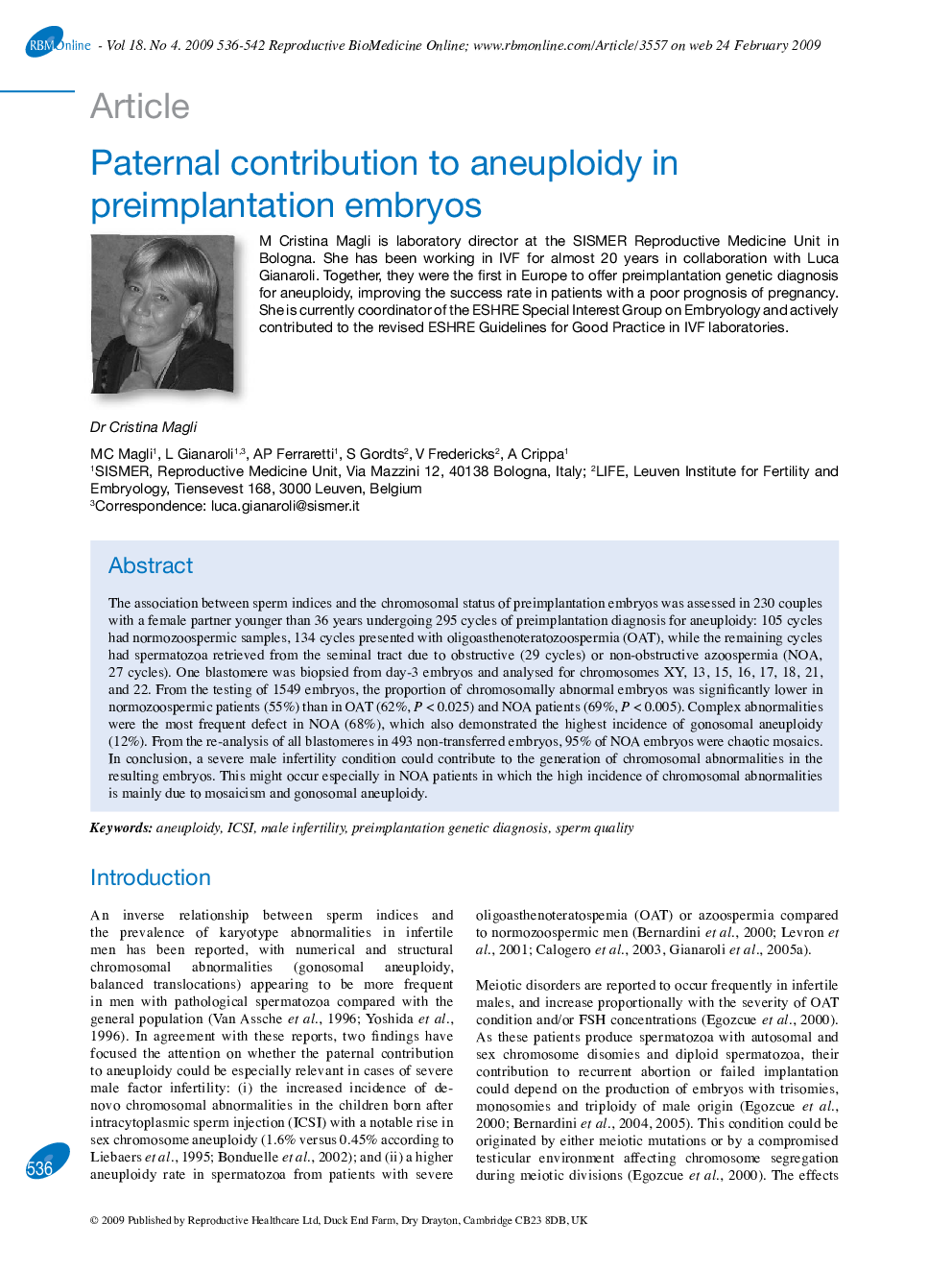| Article ID | Journal | Published Year | Pages | File Type |
|---|---|---|---|---|
| 3972430 | Reproductive BioMedicine Online | 2009 | 7 Pages |
The association between sperm indices and the chromosomal status of preimplantation embryos was assessed in 230 couples with a female partner younger than 36 years undergoing 295 cycles of preimplantation diagnosis for aneuploidy: 105 cycles had normozoospermic samples, 134 cycles presented with oligoasthenoteratozoospermia (OAT), while the remaining cycles had spermatozoa retrieved from the seminal tract due to obstructive (29 cycles) or non-obstructive azoospermia (NOA, 27 cycles). One blastomere was biopsied from day-3 embryos and analysed for chromosomes XY, 13, 15, 16, 17, 18, 21, and 22. From the testing of 1549 embryos, the proportion of chromosomally abnormal embryos was significantly lower in normozoospermic patients (55%) than in OAT (62%, P < 0.025) and NOA patients (69%, P < 0.005). Complex abnormalities were the most frequent defect in NOA (68%), which also demonstrated the highest incidence of gonosomal aneuploidy (12%). From the re-analysis of all blastomeres in 493 non-transferred embryos, 95% of NOA embryos were chaotic mosaics. In conclusion, a severe male infertility condition could contribute to the generation of chromosomal abnormalities in the resulting embryos. This might occur especially in NOA patients in which the high incidence of chromosomal abnormalities is mainly due to mosaicism and gonosomal aneuploidy.
